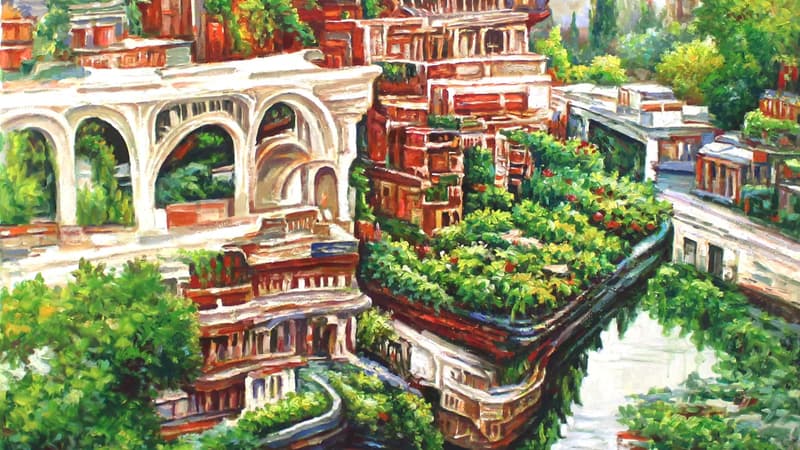artificial intelligence that have invaded social networks and compete with Google searches, will they soon take over art galleries? In any case, they have got their foot in the door, thanks to the Obvious collective: the French trio, forerunners of algorithm-based artistic creation, is exhibiting their new series “7.1” until January 14, inspired by the seven wonders of the world , in the gallery Danysz.
After the portraits of the Middle Ages and the Japanese prints, the collective thus addressed the lighthouse of Alexandria and other hanging gardens of Babylon. “With a historian, we consulted ancient texts that described the appearance of these seven wonders,” explains Pierre Fautrel, a member of the collective along with Gauthier Vernier and Hugo Caselles-Dupré.
augmented reality pictures
“Then we use it to create our ads,” those sequences of words that allow artificial intelligences like Midjourney or Stable Diffusion to generate images. The Colossus of Rhodes, the Pyramid of Cheops and the Temple of Artemis thus acquire a fanciful form, the result of the marriage between the imagination of human artists and the science of algorithms.
Ultimately, the trio worked with copyist painters to give these digital images tangible form, in the form of oil on canvas. “A physical representation that people can more easily relate to,” says Pierre Fautrel.
But physical does not mean fixed. By scanning the paintings with an app, visitors can experience extended animated versions in augmented reality, which can be explored by moving their smartphone around the image. Augmented versions that are sold as NFTs, a sector in which the collective is also a pioneer: their first works were sold on the blockchain in 2018.
“The revolution is underway”
This AI art show is one of the first in the world to be held in an international gallery, but the Obvious collective isn’t on its first try. In 2018, the trio sold a canvas created by IA, the Portrait of Edmund de Belamy, for $430,000.
Pierre Fautrel insists: “Creating with algorithms is not just ‘I press a button and it generates itself'”. Behind each painting “several thousand images” have been generated. Obvious even decided to start the series from scratch three times, due to the appearance of new, more efficient AIs.
It must be said that techniques have evolved enormously since the time of the Portrait of Edmund de Belamy. The number of text-to-image algorithms has skyrocketed in recent months, as have their performance and accessibility.
“The revolution is already underway”, abounds Magda Danysz, owner of the gallery. “That is why it is important that these artists, who are opening new paths, feel supported and accompanied in their practices.”
Source: BFM TV


